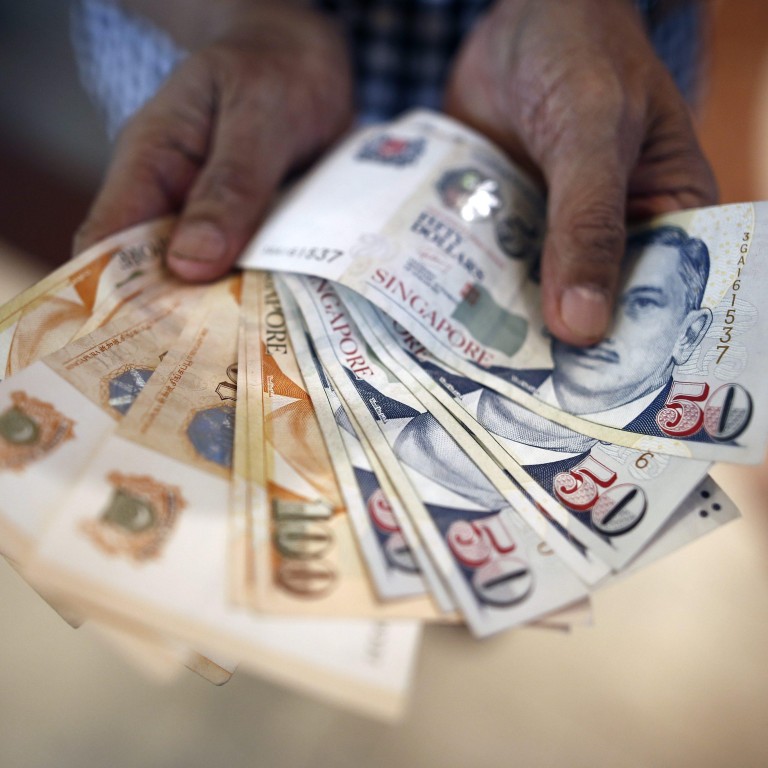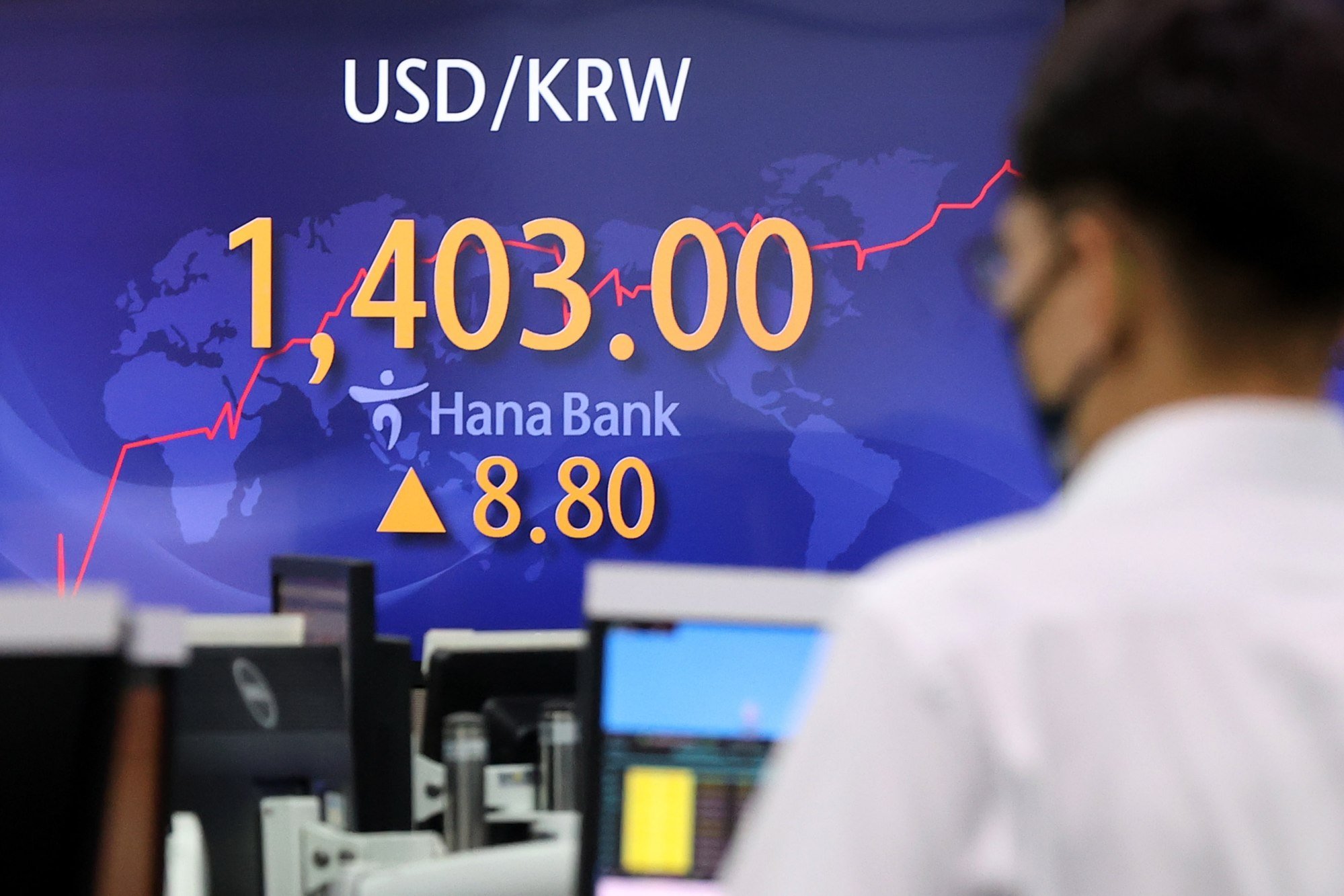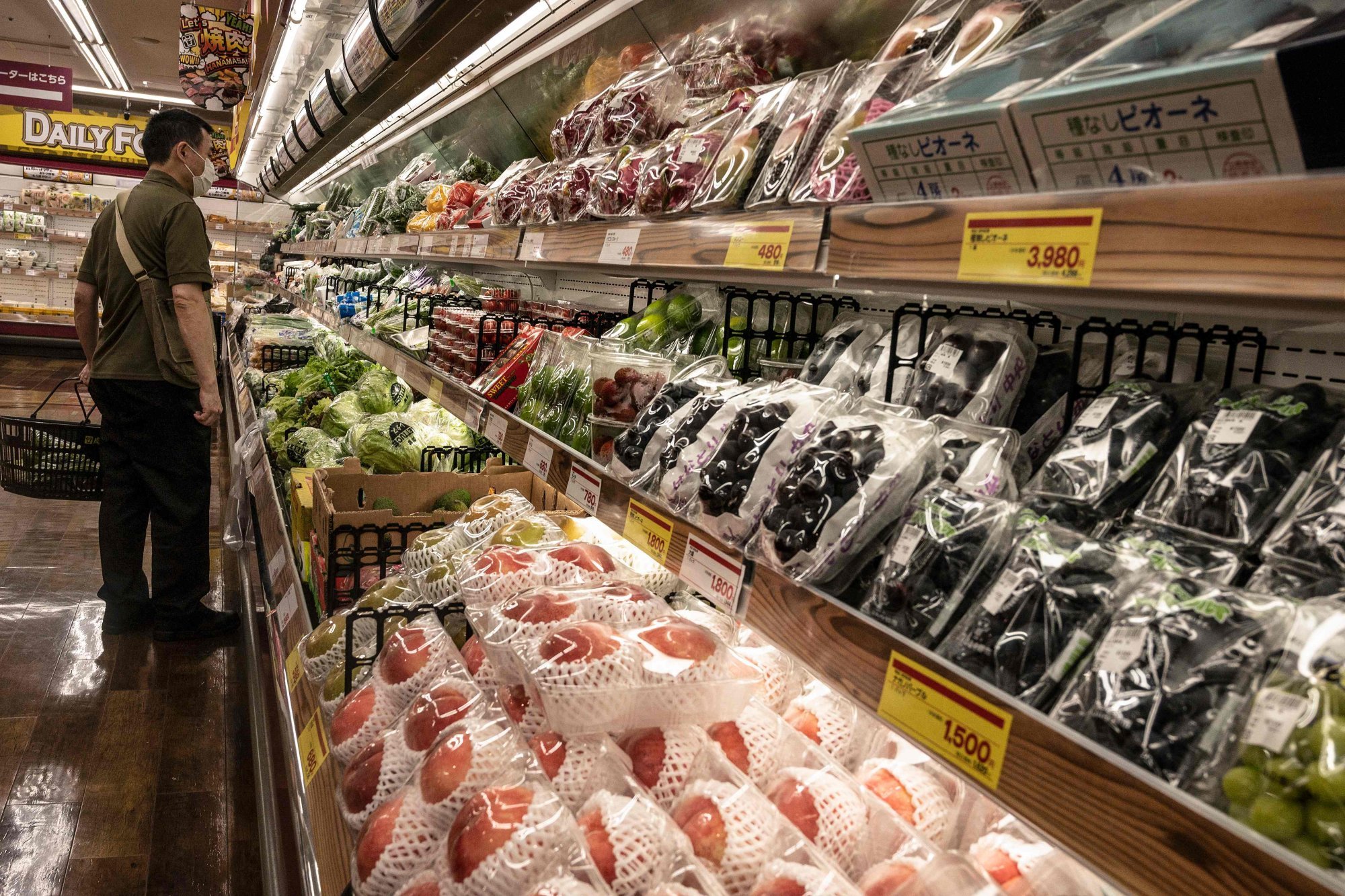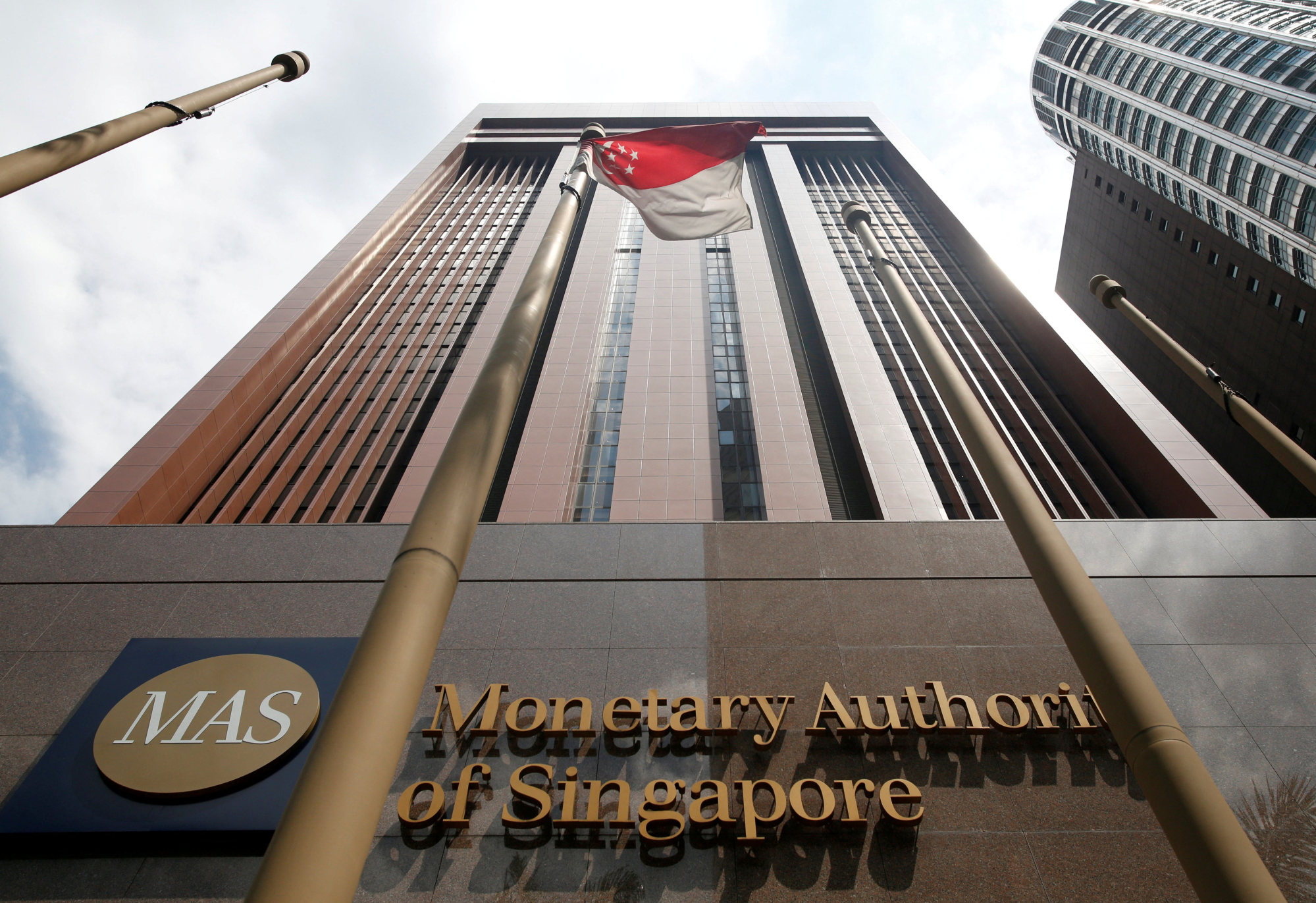
Soaring US dollar sends South Korea, Thailand, Philippines, Japan reeling. But Singapore’s currency is still holding up
- The US Fed’s aggressive policy tightening turns the screws on Asian economies already grappling with geopolitical anxiety and supply-chain disruptions
- Inflation is widespread and worsening across the region. But in a sea of ailing Asian currencies, the Singapore dollar has emerged as an outlier
The Fed projected that to achieve its goal of bringing inflation down to 2 per cent, it would have to continue to aggressively raise its rate to the 4.25-4.5 per cent range – up from the current 3-3.25 per cent band – by the end of this year, with a more gradual increase to 4.50-4.75 per cent in 2023.

Partners or rivals? China ‘supplementing’ Korean industrial development model
South Korea’s inflationary woes are best illustrated by kimchi, the ubiquitous condiment found in every household and used either as a side dish or a key component of dishes served in homes and restaurants across the nation.
A “kimchi crisis”, sparked by unfavourable weather, has been fermenting this summer, causing prices to go up to 50,000 won (US$35.50) for a 4kg pack, nearly double the regular rate.
The Bank of Korea’s decision to raise its key interest rate to keep track with the Fed has also dug into incomes, as higher rates of interest on loan repayments means less money available to households and small businesses for savings and discretionary spending.

To survive, many people have taken on extra jobs.
The number of people holding multiple jobs hit a record high of 629,610 in May this year, according to data from Statistics Korea, up by 65 per cent from January 2020 before the pandemic hit.
“It’s scary to go to a market as prices of food are all rising,” said Kim Jung-sook, who has to work as a part-time housekeeper for her brother to add to the modest income her husband earns as a delivery truck driver in capital city Seoul.
Asia behind the tightening curve
While the Fed’s aggressive rate increases have had a definite effect on Asian economies and their currencies, some are faring better than others.
Joining the won at the bottom of the pile are the Thai baht and Philippine peso.
As Thai court suspends Prayuth, ex-army ally takes over as ‘acting PM’
“The Bank of Thailand is in no rush to hike rates because the economy is recovering slowly, and domestic politics is a bit of an added headwind,” said Ashish Agrawal, British bank Barclays’ Asia head of FX and emerging markets macro strategy.
“What that means is the government is not going to be able to follow pro-growth policies, which means locals will want to hold more dollars while foreigners delay buying local assets.”
This does not mean that the central banks of Southeast Asia’s bigger economies have stayed idle. All major central banks in the region have tightened their policies in response to the Fed’s moves, albeit at a more gradual pace as they looked to mitigate inflationary pressure while setting a path of normalisation after a period of policy loosening to soften the blow from Covid-19.
Next year, we do not see any currencies strengthening against the US dollar
But Southeast Asia’s central banks have been a little too slow to tighten, and may end up having to reverse their positions should there be a significant slowdown in US and global growth next year as expected, said Fung Siu, principal economist with the Economist Intelligence Unit.
“At what point do they think the inflation battle has been won? Because with monetary policy, it takes effect six months later,” Fung told This Week In Asia.
Should the prediction of a global slowdown come to pass next year, it will lead to weaker private consumption, Fung said. To bolster domestic spending, central banks would typically need to loosen policy, even if it may drag down the currency.
“Next year, we do not see any currencies strengthening against the US dollar,” she said.
Inflation becomes a stark reality
Some experts say a silver lining from local currency weakness against the dollar would help bolster revenue from exports.
But the trickle-down effects are not apparent to many Sri Lankans, who have seen petrol prices go up by nearly fourfold in less than a year.
The price of 92 octane grade petrol in Sri Lanka surged to 540 rupees (US$1.48) a litre in August compared to 147 rupees in November last year.

Auto-rickshaw driver Jayasiri Pathirawasam is living that reality. The veteran driver, who has been ferrying passengers since 1987, said his daily income has plummeted by two-thirds to just 1,000 rupees as commuters balk at higher fares caused by skyrocketing prices at the pump.
“We used to eat and live well, but now we struggle to provide ourselves with two meals per day,” said the 59-year-old Pathirawasam, whose income provides for five family members.
Why Pakistan ‘super floods’ are a warning for South Asia, rest of the world
The resulting surge in fuel prices meant commuters have been left with fewer transport choices, as they search out cheaper options after fares doubled for the small non-air conditioned taxicabs that are a mainstay for travelling between capital city Islamabad and eastern suburbs up to 15km away.
“I switched to using a hailed motorcycle service this semester, but even that now costs what the car services used to,” said Abdullah Hassan, an undergraduate student of finance.
Abdullah said he had considered using a limited government bus service that was recently extended to outlying areas of Islamabad because it is very cheap, but decided against it because of overcrowding.
“Problem is, lots of people have stopped using cars and motorcycles to commute so there are very long queues and people are jam-packed onto the buses,” he said.

She said she has little choice but to keep the fridge stocked up as she has three sons at home. To save costs, she has had to stop buying them treats like ice cream and welcomed the cooler Autumn weather as they can lower energy costs since they don’t need air conditioning.
“But it is really worrying,” the 41-year-old said. “The prices are higher every time I go back and it’s the same when I need to put fuel in the car. I don’t really follow the news too closely, but I hear that prices are probably going to stay high for some time now.”
Japan’s ‘screwed-up’ monetary policy
Economists have widely expected the Japanese yen to plunge in value against the dollar, largely due to the Bank of Japan’s (BOJ) insistence on maintaining its ultra-loose monetary policy. Policymakers on Thursday voted unanimously to keep its short-term interest rates at -0.1 per cent and at 0 per cent for 10-year government bond yields.
However, it made the unexpected decision to intervene on the foreign exchange market, buying the yen for the first time since 1998 in a bid to shore up the battered currency.
The move helped the yen recover 2 per cent against the dollar, but it remains to be seen if it can sustain its performance without further intervention.
Song Seng Wun, an economist with Malaysian bank CIMB, said the weak yen may help exporters but it will have the opposite effect for consumers who are grappling with higher living costs and middling wage growth.
Japan’s monetary policy is completely screwed up but the BOJ doesn’t see it that way
“Japan’s monetary policy is completely screwed up but the BOJ doesn’t see it that way … the question is can a weaker yen help create investment and job opportunities within Japan?” Song said.
The situation is less dire for most other Asian countries as there is still capacity to add jobs and grow incomes, Song said.
“As long as we continue to add jobs and income growth in our respective countries, we can take advantage of a cheaper yen to have a holiday … the weaker yen is primarily a BOJ problem and they still have difficulty trying to figure out what to do.”

While the Singapore dollar still experienced some depreciation against the US dollar, it was benign compared to the hit taken by its regional peers and the central bank’s pre-emptive policy moves also helped the city state keep pace with inflationary pressure, economists said.
But with the US Fed signalling more policy tightening to come, can Asian nations deal with the growing pressure on their economies and currencies?
Yes, according to economists who pointed out that unlike during the Asian financial crisis, central banks have learned their lesson and steadily built deep international reserves as an emergency fund in case their governments need some help to prop up their local economies, or to carry out limited market intervention if necessary, as done by the BOJ on Thursday.
Inflation in Japan hits a 31-year high, creating headaches for its central bank
Does that mean it will get any easier? Not unless the global economy returns to some semblance of stability.
“Until the rest of the world boosts growth, or US rates start repricing lower, this underlying pressure is going to sustain,” Barclays’ Ashish said.
Additional reporting by Dimuthu Attanayake, Julian Ryall, Park Chan-kyong and Tom Hussain


